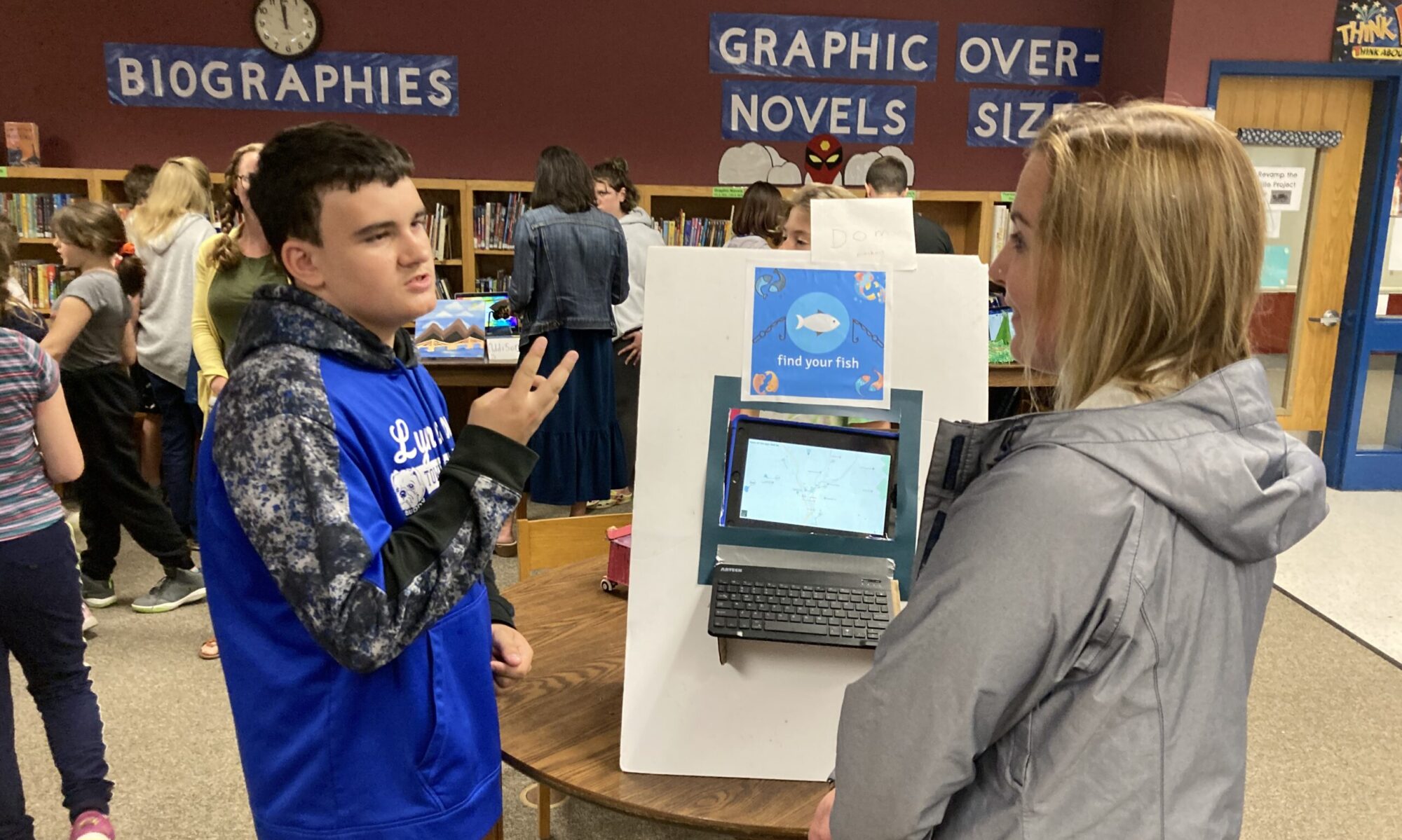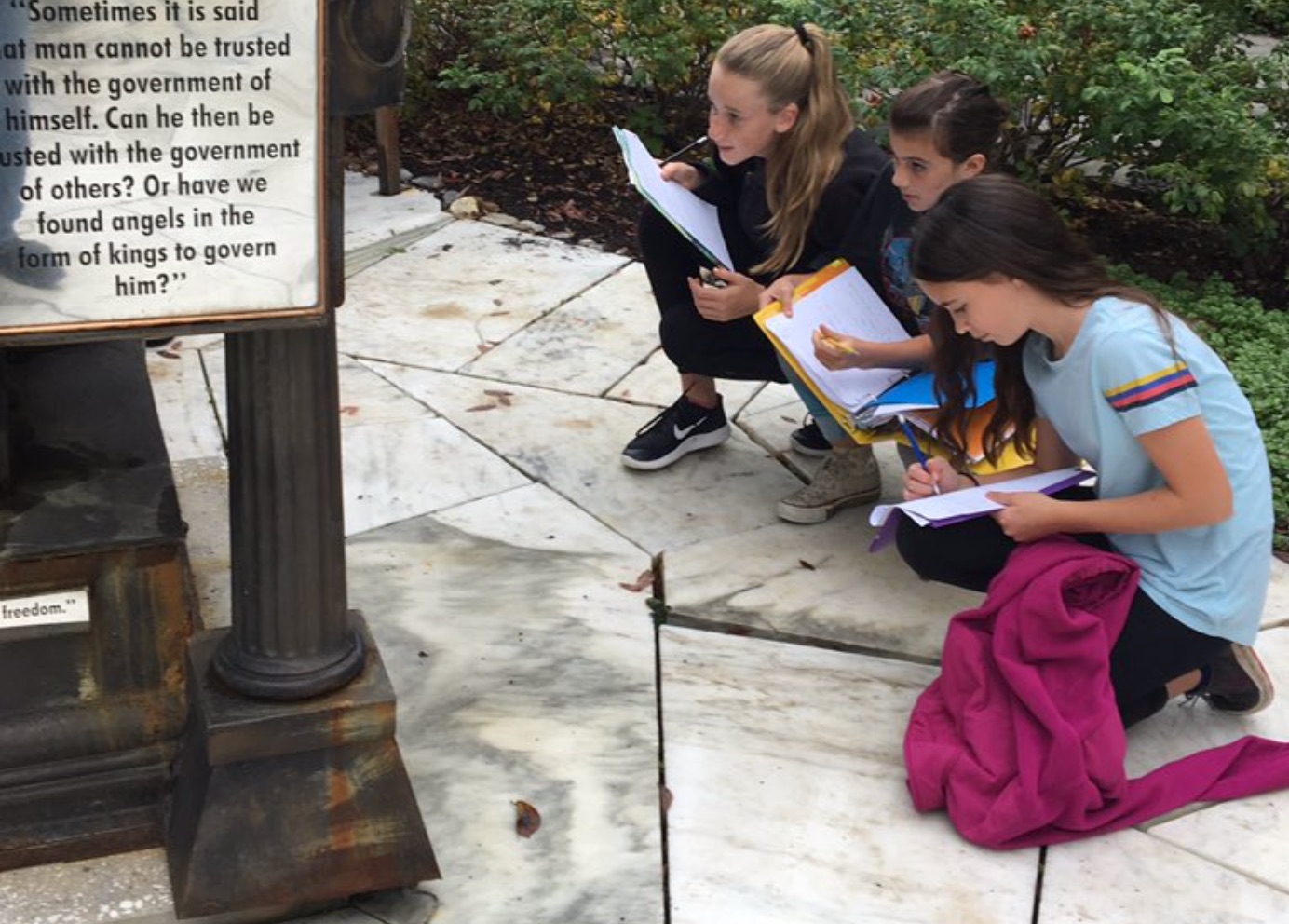Middle level educators have long sung the praises of integrated curriculum. It’s been a foundational practice in some middle schools. But why isn’t it happening everywhere, all the time? Right now, our young adolescents are growing and developing in hybrid, remote and uncertain school models. And that means they need integrated and thematic curriculum more than ever.
What is an integrated and thematic curriculum?
This image by Mark Springer nicely shows a curriculum continuum.
At the left end of the continuum is our most traditional middle school curriculum model.
And that’s where subjects are separated. They’re taught separately and have separate curriculum. It’s a middle school where students spend their days moving through 4-6 different subjects that are very discrete and separate.
Next along the continuum, interdisciplinary and integrated curriculum bring some sort of connection between each class. They bring cohesion around what a student learns.
And then at the far right end of the continuum, students don’t experience separate classes. Instead, teachers and students together negotiate themes. That’s a high degree of integration. In a typical interdisciplinary or integrated scenario, the teachers on that team or house within the middle school choose to teach their subjects around a common topic or theme.
They might even design a set of guiding questions that will drive the student inquiry and learning.
What do themes look like?
An interdisciplinary or integrated unit theme usually names a topic that transcends discipline and content. This article by Nancy Doda and Mark Springer goes into more detail about the power of thematic teaching and learning.
Unit themes should:
- Be drawn from the real world and reflect issues and problems of social significance.
- Serve as a lens through which to better understand the content being addressed from a multidisciplinary perspective.
- Inspire young adolescents to invest in and be curious about the learning. They should spark imagination.
And how do guiding questions fit in?
Integrated units usually have 2-3 guiding questions that drive the teaching and learning. And these guiding questions can also be called focusing questions. This resource What Is a Good Guiding Question? Can help teachers learn how to hone questions.
Guiding questions:
- Have no right answer
- Frame content in a meaningful (real-world) context
- Make sense and can be understood by students
- Require a multi-disciplinary approach
- Challenge students to examine & demonstrate connections between content & larger world issues
Here are some sample guiding questions:
- How do human choices impact our environment and planet?
- Why is what we eat important? What factors determine the foods we eat?
- Why do people get sick? Why is it so hard for some people to get well?
- How does the role of the government impact our lives?
Why is curriculum integration needed now?
When we integrate curriculum, teachers work together to design curriculum around a common theme or topic. As a result, students are most likely to make connections. It’s how they see the real-world relevance to their learning. Now, if the unit also provides students with clear and easy guiding questions that cross curriculum? Then the student is more likely to be clear about what they are learning.
In a nutshell, the theme and topic should ground the teaching and learning. It should provide that significance and meaning for the student. In this unusual time – when many of our “normal” practices are disruptive, students need continuity. More than ever, students need to see the connections between what they are learning in school and what they know about the world around them.
Integrated and interdisciplinary curriculum is not new. And there are many amazing examples around us.
In Randolph Union High School, in Randolph VT, the middle school team completely transformed their approach to curriculum. They decided to dip a toe into integrated curriculum, by having their whole middle school team design a unit on clean water. Science, Social Studies, English and Math. In every class, students took a new angle on the work they’d just done in the last class. Additionally, the team used Google Classroom and hyperdocs to track student work and make adjustments to upcoming lessons based on the outcome of the previous lessons — even in another content area.
That, my friends? That is truly responsive teaching.
Meanwhile, down in Londonderry, VT, Charlie Herzog, at the Flood Brook School, has been using integrated curriculum for years. He incorporates a powerful and direct student feedback loop, to make sure students enjoy the work. As a result of recent feedback, Charlie made project-based learning more central to his integrated curriculum, to see how students responded. Turns out: they LOVED IT.
Our 2nd Integrated Studies Exhibition #floodbrook #vted pic.twitter.com/lk9fGs0LmI
— Charles Herzog (@PJ_Vermont) March 8, 2019
3 ways to get started with integrated curriculum… tomorrow!
Let’s say you want to start integrating curriculum right away. You can! Here are three ideas to make it do-able.
1.Create your own theme day.
Declare that Friday, for example, is Art Around the World Day. Then, go ahead and embed that theme into all of the learning for that day. Sounds simple, but can be deeply powerful in terms of student engagement. Think of it: an extended period of time to focus on one unifying area.
2. Design your advisory plans around a weekly theme.
Advisory has curriculum, too! For one week, try building plans for your advisory curriculum around a theme. Possible themes?
- Make Healthy Choices
- Know Your Neighbors
- Sing Your Own Kind of Song
- Masks Through the Ages (Hey look: present-day relevance! Bonus!)
3. Get your team on board
Propose to your teaching team that you choose a week to commit to a team-wide theme.
Let’s say you decide the week of November 9 is a thematic curriculum week. During that week, the team will all integrate Food Systems and Nutrition into the learning. Your math colleague designs some activities around meal planning and budgeting. Your language teacher crafts a vocabulary challenge involving ordering food or buying it in the grocery store, in multiple languages. English language colleague asks students to share their favorite food systems stories; the social studies instructor leans in to provide support for students researching where their favorite foods fit into existing local food systems.
Food for thought! (ha!)
Please note: the photo that accompanies this post was taken before the current pandemic, when social distancing was not necessary.




At The Sharon Academy, we have been working to master our integrated curriculum for 20 years. There is always a balance to strike between being overly handed with the integrated connections and finding a moment for “ars gratia artis” in each subject. John Clark, my mentor at my UVM Masters program, was a legend when it came to teaching generations of Vermont educators about integrated curriculums and certainly an inspiration to so many of us.
To me the key to good integration is that you use the skills and thinking that would traditionally be taught in a particular subject and transform them into tools to analyze a system wide problem. If we are looking at Food Insecurity, we need to understand nutrients, calories, agriculture, economics, political systems, and the stories of people living in poverty. We need to express our concerns and frustration through art and music, and we need to learn to take action. We are working towards deeper understanding by employing the tools of subject area classrooms.
Andrew, thank you for sharing about your work at Sharon Academy. I’m really interested to hear about your model. It sounds like your version of integration is pushing towards problem-based and/or project-based learning in that you analyze a system wide problem. I love the example of the dimensions of a food unit. Do you have any other tips for teachers who wish to deepen their level of curriculum integration?